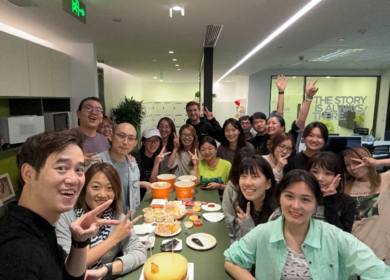
By Chris Owen, Director, UK
Def.: An event forces the main character to change their ways and often become a better person
It’s hard to imagine — given its ubiquity across retail and bedroom shelves alike — that just 15 years ago LEGO was on the verge of bankruptcy. Fast forward 10 years, and 2014’s debut LEGO Movie launched and raked in nearly $70m in its opening weekend.
When looking at the ‘rebirth’ plot, there are few better business examples of a brand being forced to change (in this example due to its financial situation), and become better as a result.
Too many bricks?
Why was LEGO in such turmoil? The reasons for the teetering future were numerous, but at the core was the fact that few of the senior team within LEGO actually knew how much it cost to produce some of the sets — with many becoming loss leaders as a result. So bad was the situation, that some of the parts within the sets were costing more to source than the kits.
In addition, the number of (sometimes terrible) expansion lines meant the number of bricks in the LEGO universe (the term by which every brick — itself an element — is brought together) soared to over 12,000. This caused significant manufacturing and logistics problems. To compound the problems, some of the additional lines weren’t even compatible with standard LEGO bricks.
It’s widely cited that one of the sole drivers for the company’s liquidity at the time was the Star Wars range (see this from WIRED as evidence). This licensing model, established in 1999, is a commercial model that continues today, successfully, through everything from Harry Potter to Jurassic Park.
Rise of Vig
The arrival in 2004 of Jorgen Vig Knudstorp, an ex-McKinsey consultant, was the catalyst to a complete reversal of fortunes. Vig was the first head of the business who was not a member of the founding family — a potential risk, but in some ways the ideal new hand who could look at the business more objectively.
He tackled the internal business units which weren’t turning a profit. LEGO has previously had a habit of identifying an opportunity and doing it themselves. Fancy turning over a load of LEGO T-shirts and selling them as merchandise? Yessir. Let’s set up a T-shirt printing department. Fancy setting up a LEGO Theme Park? Yessir. Let’s become theme park operators.
Both of these are valid commercial ideas, but only if you bring in partners who either a) have the base costs for the merchandise and know how to produce it at scale, and b) know how to run something like a theme park. The LEGOLANDs you see today are run by an external (specialist) operation, although LEGO has bought back into them having sold the business previously for several million pounds.
Age 0 to 99
LEGO is a legendarily ageless toy. When I (aged 41) visit my eldest brother (aged 46), we frequently go up to his eldest boy’s (aged five) room to play LEGO. I’d say 80% of the time his son wanders off to play in the garden in the sun, while my brother and I continue to build spaceships.
Vig brought in a fresh wave of designers who were, crucially, grown-up LEGO fans. He took this passion and plugged it straight back into the future of the business. The company was re-established by asking such toy-users to become toy-makers. Because no-one designs better for the end-user than the end-user themselves.
In bringing in fresh blood to reimagine the product portfolio, Vig also culled the lines which weren’t turning profit. He brought the number of bricks back down to a manageable 6,000 figure again, massively slashing production and logistical costs in the process. It also ensured every set was compatible with everything else.
Having witnessed the success of the Star Wars license, Vig also looked to extend the line, without cannibalising the core toy. The licensing brings in new LEGO fans (arguably, encouraged by toy-playing parents), and builds up LEGO collections.

LEGO rules again
The sheer brand resilience of LEGO is reflected in its continued dominance in its specific building-block field, despite recent market entrants such as Mega-Bloks (owned by Mattel), due to the patent on the LEGO design expiring. The replica products are not compatible with LEGO, and so despite plenty of marketing and retail presence, LEGO remains an iconic toy worldwide.
Today, LEGO is the largest toy company by revenue, globally — overtaking Mattel a few years back. It’s also — brilliantly — the world’s largest manufacturer of tyres. It’s a huge turnaround from 2004, and epitomises the ‘rebirth’ plot perfectly.

